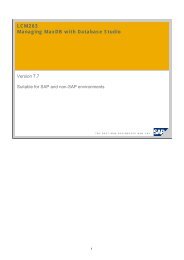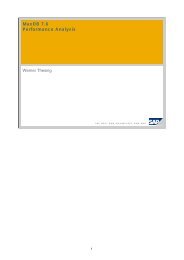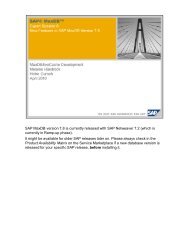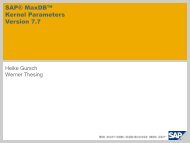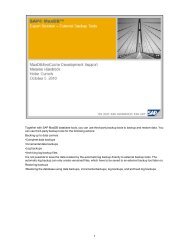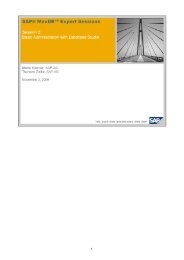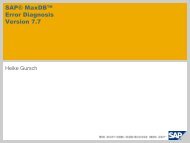Script (.pdf file, 8 MB) - SAP MaxDB
Script (.pdf file, 8 MB) - SAP MaxDB
Script (.pdf file, 8 MB) - SAP MaxDB
You also want an ePaper? Increase the reach of your titles
YUMPU automatically turns print PDFs into web optimized ePapers that Google loves.
Whenever the database is restarted (for example, after an error), the system searches for<br />
open transactions or changes made after the last savepoint and starts an automatic recovery<br />
if necessary.<br />
Only the data that was valid at the time of the last savepoint was written to the data volumes<br />
and is still available now. If the database crashes, it is only possible to trace the changes<br />
made between the savepoints by viewing the log entries.<br />
The last savepoint is now used as the starting point for the automatic recovery.<br />
The transactions shown are handled as follows:<br />
Transactions T1 and T5 are not recovered:<br />
T1 was completely backed up at the last savepoint before the database crash.<br />
T5 was started after the last savepoint but manually interrupted and rolled back before the<br />
crash, making it superfluous.<br />
Transactions T4 and T6 are recovered:<br />
T4 was active at the time of the last savepoint and completed successfully.<br />
T6 was started after the savepoint and completed successfully.<br />
Transactions T2 and T3 are rolled back:<br />
T2 was active during the crash and must, therefore, be rolled back.<br />
T3 was active at the last savepoint. This means the changes made by this transaction are<br />
included in the savepoint and must, therefore, be removed since the transaction was rolled<br />
back after the savepoint.




